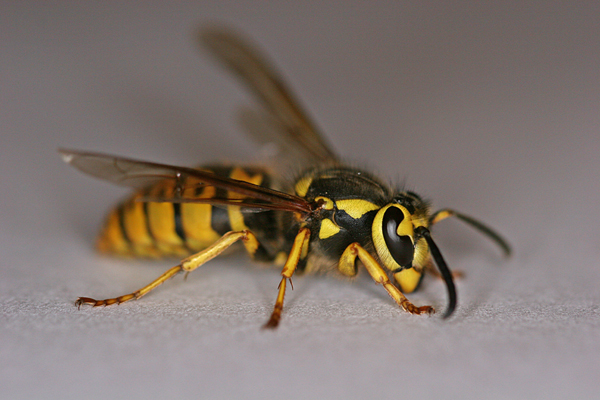To protect myself from an allergic reaction to bee venom, I carry an Epipen at all times for a self-administered dose of epinephrine if necessary. I arrange my garden pathways to minimize contact with plants and bees, and I organize my garden schedule to avoid the special bee hazards of early fall.
 |
| Apis mellifera |
Both species live communally; both species are organized around a queen; member of both species are similarly colored, yellow and black/brown.
 |
| Vespula vulgaris |
Both wasps and bees inject venom through their stingers. Because of its barbed stinger, a honeybee stings only once, then dies. A yellow jacket has no barb, so a wasp can sting repeatedly. In addition, if their nest is disturbed, yellow jackets will attack, even swarm, an intruder. Honeybees are much less aggressive.
While honeybees over-winter in their hives, yellow jackets die off each year. Only a fertilized queen wasp survives the winter. Yellow jacket hive-membership reaches its peak in September. Overcrowding and a diminishing food supply make for anxious and easily angered insects. To be safe, I make few visits to my garden between early September and first frost in mid-October.
No comments:
Post a Comment